Blog
3 November 2022
Thomas Young (1773-1829), scientist and polymath, was a member of Emmanuel who is often described as ‘The Last Man Who Knew Everything’ – in the sense that he was familiar with virtually all the contemporary Western academic knowledge at his point in history, before the expansion of knowledge made that an all but impossible feat for any individual.
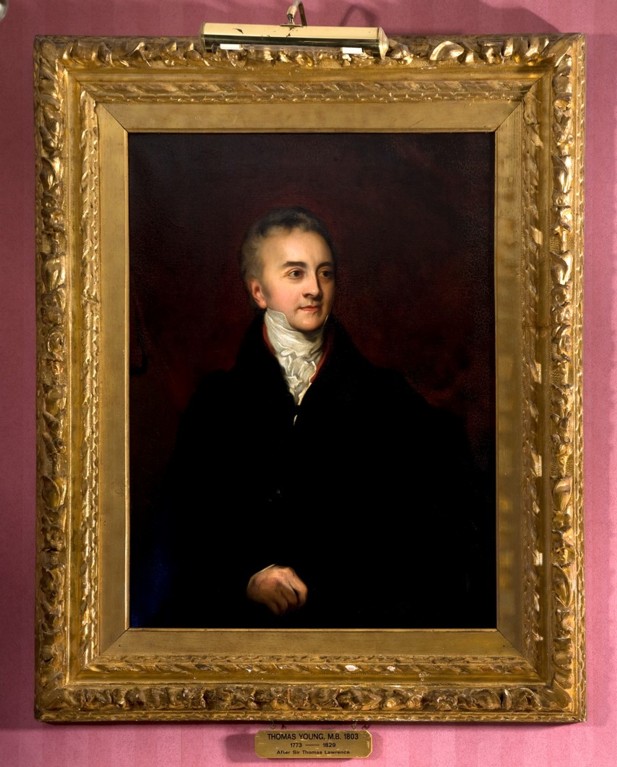
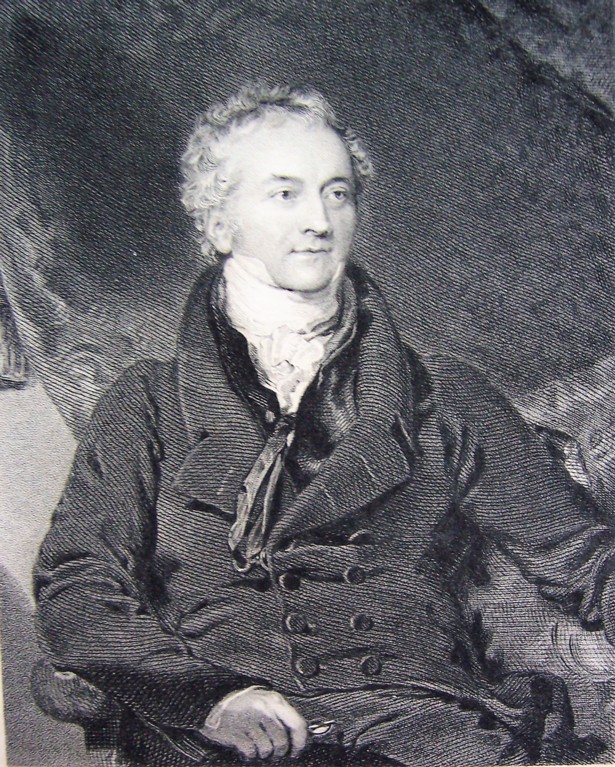 Above; Left to Right; Plate 1: Emmanuel’s portrait of Young, a copy of the 1822 original by Sir Thomas Lawrence; Plate 2: A print of the Lawrence portrait, from the College’s collection.
Above; Left to Right; Plate 1: Emmanuel’s portrait of Young, a copy of the 1822 original by Sir Thomas Lawrence; Plate 2: A print of the Lawrence portrait, from the College’s collection.
Born in Somerset to strict Quaker parents, Thomas Young was an infant prodigy who had read through the Bible twice by the age of four. While a child he learned Greek, Latin and Hebrew, as well as French and Italian – and later Arabic, Persian, Chaldean, Syriac, Samarian, Amharic and Turkish – and this extraordinary aptitude for language would come to fruition later in one of his most celebrated achievements. But it was also every sort of enquiry into theoretical and applied science that engrossed him from an early age.
As a Quaker, Young could not attend Oxford or Cambridge (being unable to take the oaths required), and so he studied medicine for a year at Edinburgh before pursuing his medical studies at Göttingen where he graduated. But once he moved away from home, Young moved away from his Quaker upbringing. He was altogether too fond of dancing, the theatre and playing his flute, and for such abominations he was disowned by the Quakers of Edinburgh. On returning from Göttingen he therefore declared himself an Anglican and matriculated at Emmanuel, ostensibly to study medicine, although he actually pursued his independent researches, having learned enough medicine at Göttingen to graduate at Cambridge. Going to Cambridge was a tactical career-move, since without an Oxbridge degree a Fellowship of the College of Physicians was precluded, and Young had set his sights on a medical career.
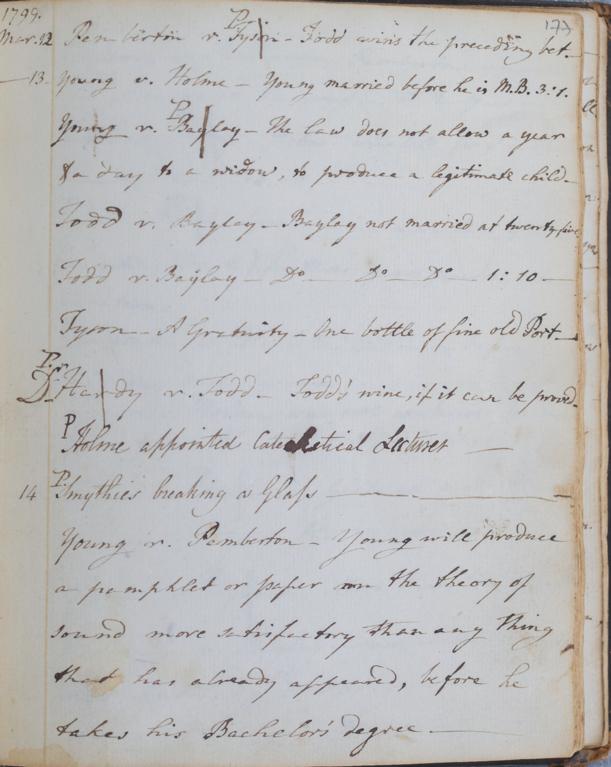
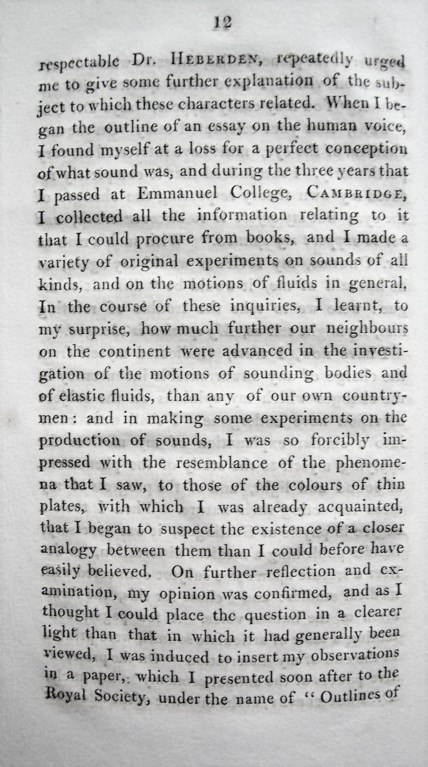
Above; Left to Right; Plate 3: Page from 1799 in the Parlour Wager Book, showing three bets by Young, the last being ‘Young will produce a pamphlet or paper on the theory of sound more satisfactory than anything that has already appeared before he takes his Bachelor’s degree’. The Parlour judged Young to have lost this bet; Plate 4: Page from Young’s A Reply to the Animadversions of the Edinburgh Reviewers (1804), referring to his researches into sound during his years at Emmanuel.
At the age of twenty-four Young inherited from his mother’s uncle, also a physician, a house in Park Lane and a fortune that made him financially secure. He set up his medical practice in Welbeck Street, but there was time for research. Young developed a paper on the accommodation of focus in the eye which he read to the Royal Society in 1793 and was elected a Fellow in 1794 at the age of barely twenty-one. Other important papers to the Royal Society include ‘Sound and Light’ and ‘On the Mechanics of the Eye’ (both in 1800) and ‘On the Theory of Light and Colours’ (1801). Appointed a professor at the newly-founded Royal Institution, Young gave 110 lectures over two years exploring Mechanics, Hydrodynamics, Astronomy and Physics. These were published as A Course of Lectures on Natural Philosophy and the Mechanical Arts (1807).
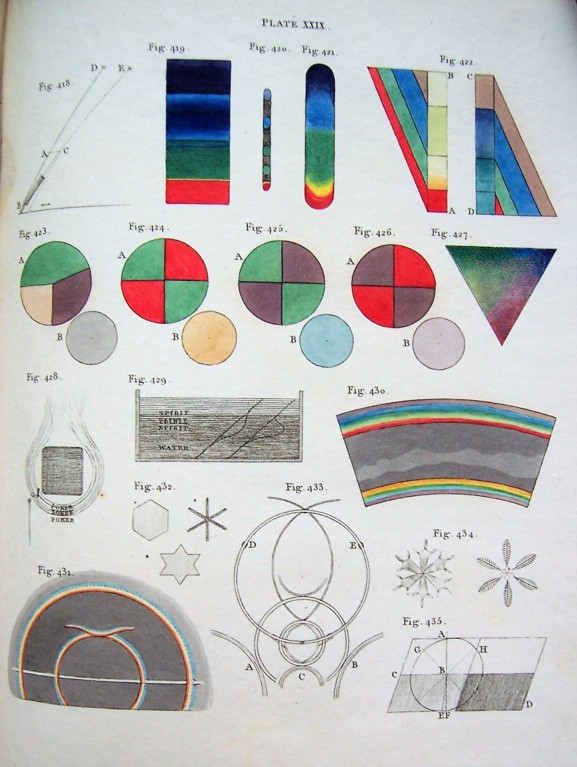
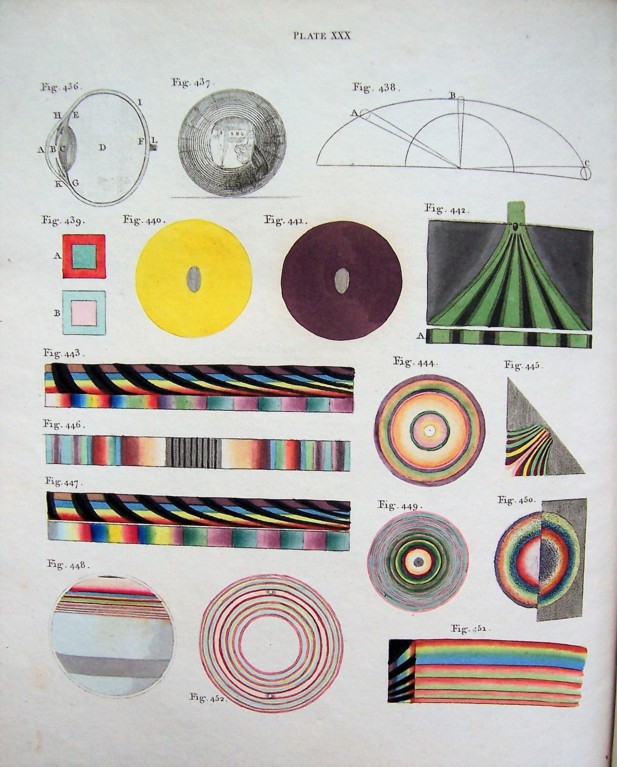
Above; Plates 5 and 6: Plates from Young’s A Course of Lectures, illustrating his lectures on optics and colour.
Young pioneered analogies between the transmission of sound and light, and according to tradition (sadly, there is no evidence) he first observed the phenomenon of ‘interference’ in the ripples set up by two swans on the Emmanuel Paddock pond. This is key to the experiment known as ‘Young’s Slits’ which propounds a wave theory of light (although since this contradicted Newton’s thinking on light it was met with some ridicule at the time). Young also advanced a theory of how the eye detects colour, arguing that the phenomenon of light being a mixture of three primary colours is due to the retina containing three kinds of receptors, sensitive to different frequencies. Among other enquiries, Young developed a theory known as ‘Young’s Modulus’ to quantify elasticity, developed a theory of the tides, and became an expert in life insurance.
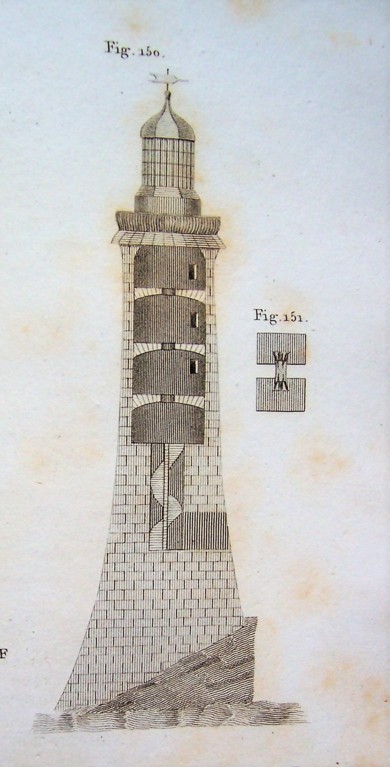
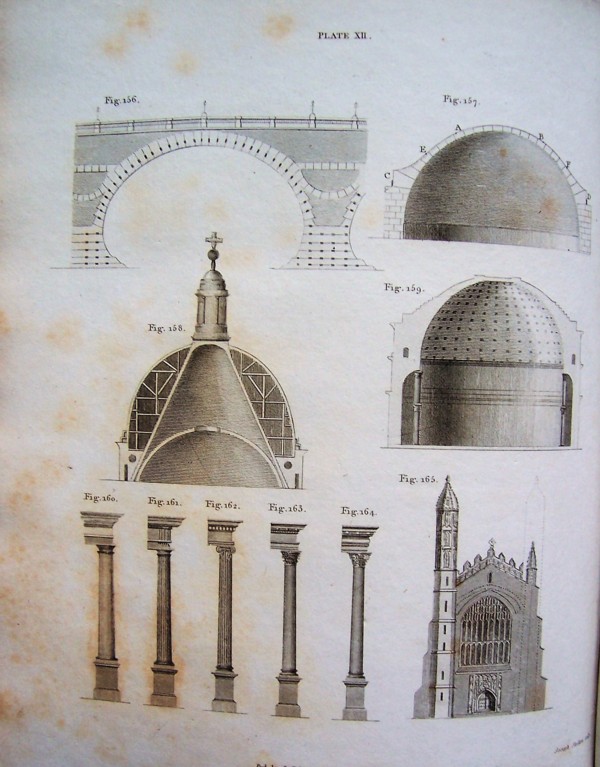
Above; Plates 7 and 8: Plates from A Course of Lectures, illustrating Young’s discussion of: how the Eddystone Lighthouse resists the force of the waves; and of the stresses in the domes of St Paul’s, the Parthenon, various columns, and King’s College Chapel. (Young believed ‘Gothic architects’ superior to the Greeks).
Still to come was the fruition of Young’s lifelong command of languages, in his foundational contribution to the deciphering of Egyptian hieroglyphics on the Rosetta Stone in the British Museum. The stone records a decree of Ptolemy V in 196 BC, written in three scripts: hieroglyphics, an unknown script named ‘demotic’, and Greek. Since the Greek text mentions that all three scripts have the same meaning, the stone held out the prospect of unlocking the other scripts. Greeks and Romans had assumed that hieroglyphics were symbolic not phonetic, and this misconception had stymied decipherment for centuries. Realizing from the Greek that some of the hieroglyphic cartouches must represent the name Ptolemy, Young worked out which symbols had been used phonetically, and published a paper with translations of 218 demotic and 200 hieroglyphic words, plus an alphabet for the demotic script. But a younger French scholar, Jean-François Champollion (1790-1832), was also working at deciphering hieroglyphics. Happening to be in Paris in September 1822, Young had what must have been the extraordinary experience of sitting beside Champollion as he announced to the Academie des Inscriptions his own breakthrough in deciphering hieroglyphics, with no acknowledgement of Young’s prior work. In a sense, Young only had himself to blame in that, always pursuing multiple researches simultaneously, he had not pressed home with his own work on hieroglyphics. Outwardly generous to Champollion, Young was privately stung at the lack of acknowledgement. And indeed, although Young’s monument in Westminster Abbey declares that he ‘first penetrated the obscurity which had veiled for ages the hieroglyphicks of Egypt’, it is usually Champollion who is solely credited by posterity with cracking the code.
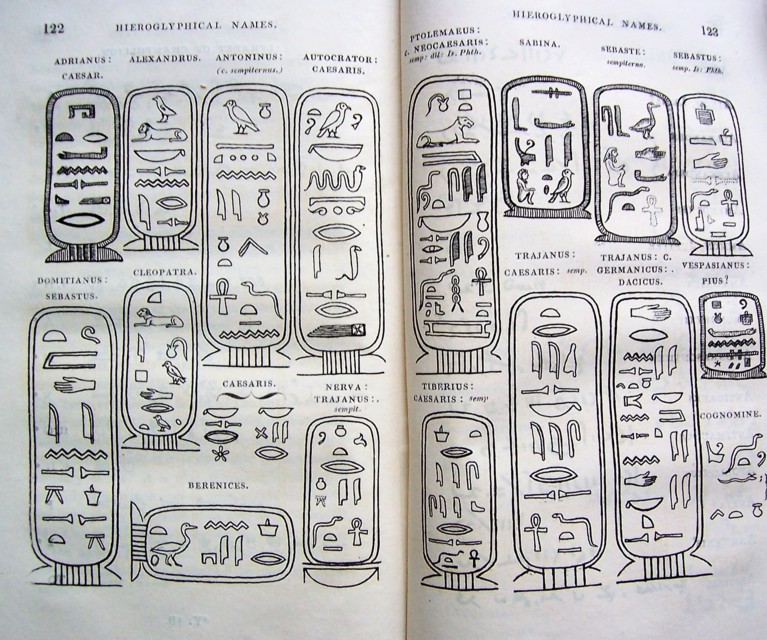 Above; Plate 9: Pages from Young’s An Account of Some Recent Discoveries in Hieroglyphical Literature (1823). The title page declares pointedly that it includes ‘The Author’s Original Alphabet, As Extended by Mr Champollion’.
Above; Plate 9: Pages from Young’s An Account of Some Recent Discoveries in Hieroglyphical Literature (1823). The title page declares pointedly that it includes ‘The Author’s Original Alphabet, As Extended by Mr Champollion’.
If all this, Dear Reader, is making you feel just slightly inadequate, there is some possible consolation in that, among so many accomplishments, what we would now call social skills were not Thomas Young’s strong point. He worked conscientiously at his medical practice, yet this never really took off because, for all his medical knowledge, Young had no bedside manner. His Royal Institution lectures, however original, were not a success with his audience, because he spoke so far over their heads. The Master of Emmanuel, Richard Farmer, introduced Young to the Fellows saying, ‘I have brought you a pupil qualified to give lectures to his tutors’, which must have gone down a storm with his tutors. To be universally known, as he was, by the nickname ‘Phenomenon Young’ may not have made interactions easy, though his private life was fulfilled by an exceptionally happy marriage to Eliza Maxwell. Remember Thomas Young and those ripples when you are next by the Paddock pond.

Above; Plate 10: The beautiful silver bread basket presented by Young to Emmanuel.
Barry Windeatt (Keeper of Rare Books)
Images by Helen Carron (College Librarian)
